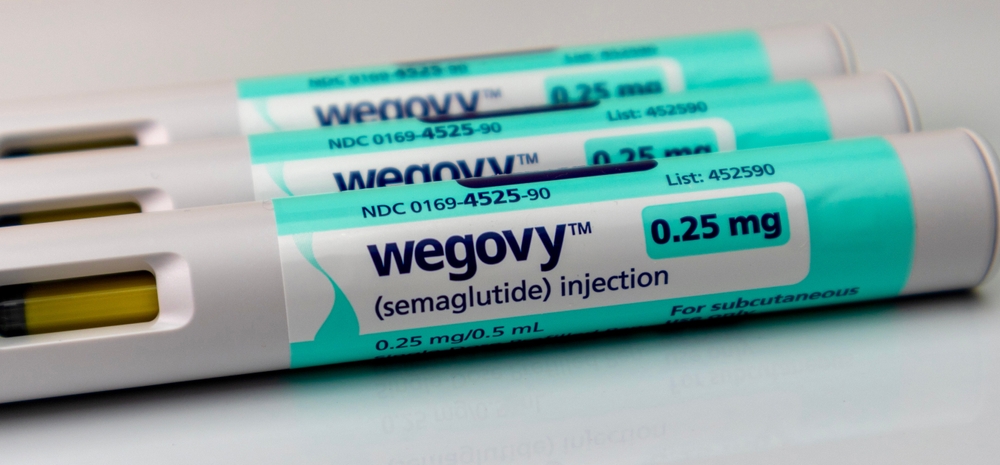If you’ve been struggling with your weight for a while, you know it can feel impossible at times. You try a plan, it fizzles and bang, you’re back to square one. Here’s the truth: chronic obesity is a medical condition, not a moral failing that you should feel emotional guilt for. Like other long-term conditions, it often responds best to a blend of treatment, education and support. That’s why prescription options such as Wegovy have become part of the conversation for people who’ve tried everything else. But how does Wegovy actually work, and is it right for you?
Below, we break down what Wegovy is, how it acts inside your body, who it’s for, how long it takes to notice changes and what to expect from day-to-day life while using it. We’ll also compare Wegovy with other weight loss treatments so you can make a confident, informed decision about your next steps.
What is Wegovy?
Wegovy is a once-weekly prescription injection whose active ingredient is semaglutide, developed by Novo Nordisk, and used as a weight loss medication approved for long-term weight management. Doctors prescribe it to be used alongside a reduced-calorie diet and an increase in physical activity.
Semaglutide is also used in Ozempic for type 2 diabetes, but the two brand names (both by Novo Nordisk) are licensed differently. Today, Ozempic is typically used for blood-sugar control; Wegovy is explicitly dosed to help people living with obesity reach a healthy weight while also supporting cardiovascular health when appropriate.
How does Wegovy work for weight loss?
Semaglutide mimics a natural hormone called GLP-1 (glucagon-like peptide-1). GLP-1 affects appetite, digestion and blood-sugar regulation. By activating GLP-1 receptors, Wegovy helps you feel satisfied with smaller portions and reduces food noise — that constant devil on the shoulder asking you what you’re going to eat next — so losing weight feels more manageable.
Appetite receptors in the brain
Your brain hosts GLP-1 receptors that help regulate hunger and fullness cues. When Wegovy activates these receptors, it can increase satiety and reduce cravings. The practical upshot is that many people find it easier to call time on a meal (or food in general), which naturally reduces calorie intake without rigid rules.
Slowing down stomach emptying
Wegovy also slows gastric emptying – the speed at which food leaves your stomach. With food sitting in your stomach for longer, you feel fuller for longer, which helps you eat less across the day and supports sustained weight loss when paired with a healthy diet and movement you can stick with.
Blood sugar regulation
GLP-1 agonists support more stable blood sugar by stimulating insulin release (when glucose is present) and suppressing glucagon. This contributes to steadier energy and fewer spikes and dips that can drive snacking. If you live with diabetes or pre-diabetes, your clinician will assess whether Wegovy is appropriate and how to monitor for low blood sugar if you’re taking other glucose-lowering medicines.
What determines Wegovy’s effectiveness?
Diet and nutrition
Wegovy is a tool that makes portion control easier – it can’t make food more appealing to you. That has to come from habit-forming. Pairing it with a healthy diet rich in protein, fibre, and colourful plants is essential. Using considerate approaches and some easy cooking hacks, you can design meals that suit your tastes and culture while gently reducing energy density. This is the heart of a diet and increased physical activity strategy that lasts.
Physical activity
Movement doesn’t need to be extreme to be effective. Brisk walks, resistance training twice a week, or dancing in your kitchen all count towards something. Activity supports muscle retention during weight loss and improves conditions like high blood pressure, sleep apnoea and joint pain.
Individual metabolism
Your starting body weight, age, hormones, medications, sleep and stress all affect your trajectory. No two journeys look the same, and that’s okay. What matters is a realistic, sustainable plan that fits your life.
Dosage and titration schedule
Wegovy is started low and increased slowly to improve tolerability. Most people begin at 0.25 mg once weekly, then step up over several weeks toward a maintenance dose that balances benefits and side effects. This process is known as titration. For many, the maximum dose is 2.4 mg weekly, though your clinician may recommend a different target depending on how you respond.
How is Wegovy administered?
Once prescribed, Wegovy comes in a pre-filled pen for a once-weekly, at-home injection into the abdomen, thigh or upper arm. Rotating injection sites helps minimise irritation. You’ll follow a structured schedule that gradually increases your dose to improve tolerability and reduce side effects. Clinicians will show you how to use the pen, what to expect and how to store it.
What Wegovy dose is needed to start losing weight?
Many people notice changes before reaching the top dose. Early in the titration (even 0.25–0.5 mg), appetite can quieten and portions naturally shrink. Others need to reach 1.0 mg or beyond before they start to feel consistent and see effects. Your response depends on factors like initial body mass index, starting body weight and eating patterns. The goal is not to rush to the maximum dose, but to find the lowest effective maintenance dose that helps you achieve significant weight loss with manageable side effects.
How long does Wegovy take to work?
There’s no fixed timeline because bodies are individual. Some people see the scale budge within a few weeks; others notice “non-scale wins” first, such as fewer cravings, clothes fitting differently or steadier energy. Over several months of consistency with medication plus lifestyle shifts, many people experience significant weight loss and improvements in health markers like high blood pressure and cholesterol. Think months, not days and keep an eye on overall trends rather than daily fluctuations in body weight.
Remember, it’s not a miracle cure
Medications don’t replace habits; they make habits easier to manage. Wegovy is most effective when used in conjunction with a reduced-calorie diet and regular physical activity. If you’re considering Wegovy (or alternatives such as Mounjaro or Orlistat), book a consultation with your clinician to explore whether the medication fits your goals and medical history.
Note: Our BMI tool is a great starting point to understand your initial body mass index and discuss your weight-management options with our team.
How does Wegovy impact your daily life?
Reduced food cravings and eating habits
Many Wegovy patients describe a quieter mind around food. This manifests as fewer intrusive thoughts about snacking and a newfound ability to stop when satisfied. You might notice you leave food on the plate or feel content with smaller portions.
Improved energy and mobility
As patients lose weight and preserve muscle through strength training and adequate protein, everyday activities (stairs, walking, gardening) often feel easier. This can create a positive feedback loop: more activity, better sleep, brighter mood.
Managing social and work life
Planning helps. Keep protein-rich snacks handy, slow down at meals and choose familiar options when eating out. If you experience nausea early on, smaller, more frequent meals and staying upright after eating can help. Having a medicinal motivator can make it easier to manage life-friendly habits.
How to maximise Wegovy’s weight loss results
Adopt a high-protein, low-carb diet
Protein supports muscle and satiety. Aim to build meals around lean proteins (such as fish, chicken, tofu, and Greek yoghurt), non-starchy vegetables, and healthy fats. Carbs aren’t “bad,” but choosing higher-fibre options can help keep you full between meals.
Incorporate regular physical activity
Combine cardio exercises (such as walking, cycling, or swimming) with two short weekly strength training sessions. Stronger muscles burn more energy at rest and protect joints – especially important as body weight drops.
Track your progress consistently
Use measures beyond the scale: waist circumference, photos, stamina, and how your clothes fit. Track habits (sleep, steps, hydration) as well as outcomes for more actionable decision-making guidance.
Stay hydrated to support appetite control
Dehydration can masquerade as hunger. Keep water close by, especially in the first weeks of treatment when your routine is changing.
What are the side effects or long-term risks of using Wegovy?
Most side effects are digestive, such as nausea, constipation, diarrhoea or reflux, and are usually mild to moderate, improving as your dose increases gradually. Rarely, people may experience severe allergic reactions (rash, swelling, difficulty breathing — seek urgent help if this occurs). GLP-1 medications can also be associated with gallbladder issues and pancreatitis; report severe, persistent abdominal pain promptly.
Wegovy isn’t suitable for everyone. You shouldn’t use it if you’re pregnant or planning a pregnancy. It’s generally not recommended for anyone with a personal or family history of medullary thyroid cancer or MEN2. People with diabetes using insulin or sulfonylureas may need tailored monitoring to reduce the risk of low blood sugar. Your clinician will also consider your other conditions. For example, a weight-related health condition such as high blood pressure or sleep apnoea, and any additional medications to ensure safety.
How can I reduce the side effects of Wegovy?
- Follow the titration plan set by your clinician – don’t jump ahead.
- Eat mindfully, meaning smaller portions, chewing slowly and avoiding lying down straight after meals.
- Choose gentle foods if you feel queasy (simple proteins, soups, plain yoghurt).
- Boost fibre gradually and consider a magnesium or fibre supplement if constipated (talk to your clinician first).
- Stay hydrated and keep moving; short walks after meals can help digestion.
- Limit alcohol, which can worsen reflux and undermine appetite cues.
- Keep a symptoms diary and share it at your reviews – clinicians can tweak timing, dose pace and diet to help.
Comparing Wegovy to other weight loss solutions
| Option | How it Works | Dosing & Access | Typical Results | Common Side Effects | Best For |
| Wegovy (semaglutide) | GLP-1 receptor agonist; reduces appetite, slows gastric emptying, supports steadier blood sugar. | Weekly injection; clinician-guided titration to a personalised maintenance dose (up to a maximum dose of 2.4 mg for many). | Often 10–15%+ of body weight over time, when paired with lifestyle, focus on sustained weight loss. | Nausea, constipation/diarrhoea, reflux; rare severe allergic reactions. | Adults with obesity or overweight plus a weight-related health condition, ready to pair medication with a healthy diet and activity. |
| Mounjaro (tirzepatide) | Dual GIP/GLP-1 agonist; similar but not identical mechanism to semaglutide. | Weekly injection; gradually increased dose under clinical supervision. | Can be similar or greater average loss vs GLP-1 alone in studies. | GI symptoms, potential gallbladder/pancreas risks. | People who need a potent injectable and meet prescribing criteria. |
| Orlistat | Blocks the absorption of about 1/3 of dietary fat. | Taken with meals containing fat; available on prescription. | Modest average loss; helpful for portion awareness. | Oily stools, urgency if eaten with high-fat meals. | Those preferring tablets, willing to keep fat intake lower. |
| Lifestyle-only programme | Nutrition coaching, movement, sleep, mindset, and accountability. | No medication; coaching frequency flexible. | Variable: success improves with structured support and tracking. | Minimal medical side effects. | Anyone starting out or not medically eligible/interested in medication. |
| Bariatric surgery | Anatomical changes to the stomach/intestines reduce intake and/or absorption. | One-off procedure with lifelong follow-up. | Largest and most durable average loss. | Surgical risks; lifelong supplements and monitoring. | People with severe obesity and comorbidities, when appropriate. |
Start your weight loss journey with Wegovy
At The Virtual Slimming Clinic, you’ll get more than a prescription. You’ll get a plan. From your first assessment to personalised nutrition coaching and movement support, we’ll help you build habits that last. If Wegovy is suitable, we’ll guide your titration, review progress regularly and adjust your plan so you continue to see results safely. Our goal is sustained weight loss and better health, not a short-term fix.
Ready to take the next step? Explore your options with us.
Frequently Asked Questions
How quickly does Wegovy start working?
Some people notice changes in appetite within the first 1–3 weeks, even at the lowest dose. Weight changes typically follow as your routine and dose settle. Focus on trends over months rather than days, and keep pairing your medication with a healthy lifestyle.
Is Wegovy safe for long-term use?
For the right person and with proper medical supervision, yes. Your clinician will review your medical history (including risks such as medullary thyroid cancer or MEN2, where Wegovy isn’t recommended), monitor labs where appropriate and keep side effects under review. Used as directed, Wegovy can help you move toward a healthy weight and better metabolic health.
Who should not use Wegovy?
People who are pregnant or planning pregnancy; those with a personal/family history of medullary thyroid cancer or MEN2; anyone with a known allergy to semaglutide; and people with specific medical issues as determined by a clinician. If you live with diabetes and use insulin or sulfonylureas, you’ll need tailored advice to avoid low blood sugar.
What happens if I stop taking Wegovy?
If you stop the medication without a plan to continue your habits, your appetite may gradually return to baseline, and some weight can come back. That’s why you should focus on building skills (meal structure, strength training, sleep, stress tools) that remain even if your medication changes. In some cases, a clinician may taper your dose and help transition to lifestyle-only strategies or other weight loss treatments over time.
How much weight can I lose with Wegovy?
Results vary by starting body weight, the dose you reach and how consistently you follow your plan. Many people achieve significant weight loss over several months, especially when medication is combined with a balanced plan for food, movement and accountability. Remember: the aim is steady progress and better health markers – not immediate results.














